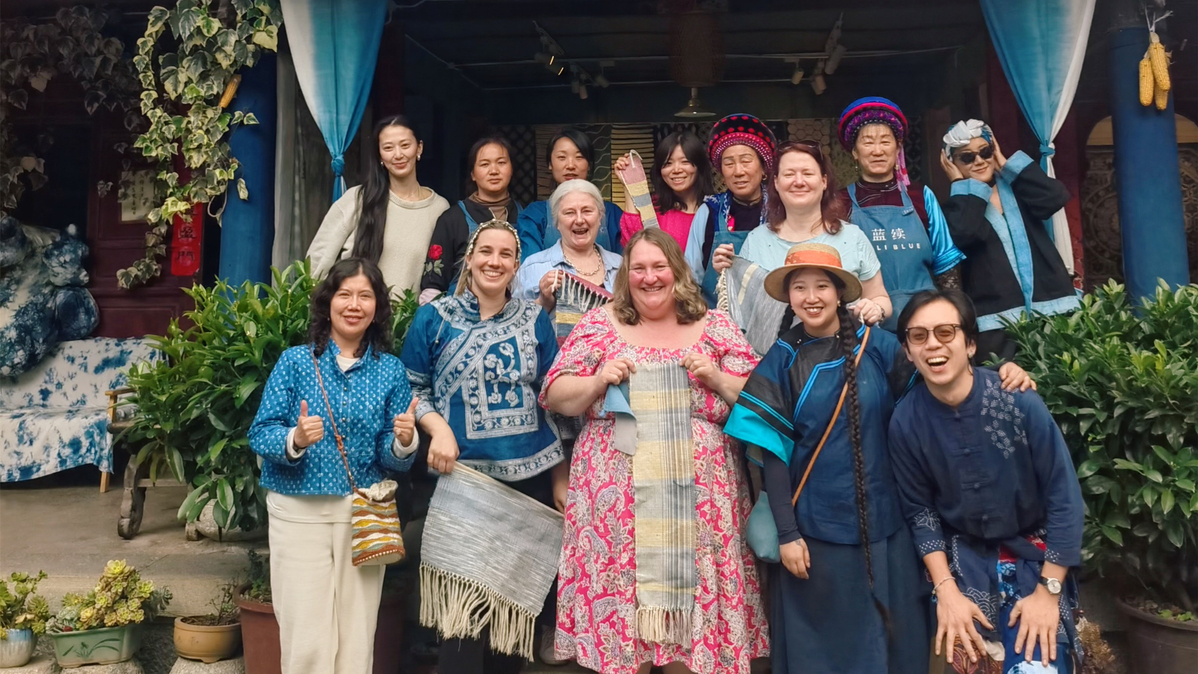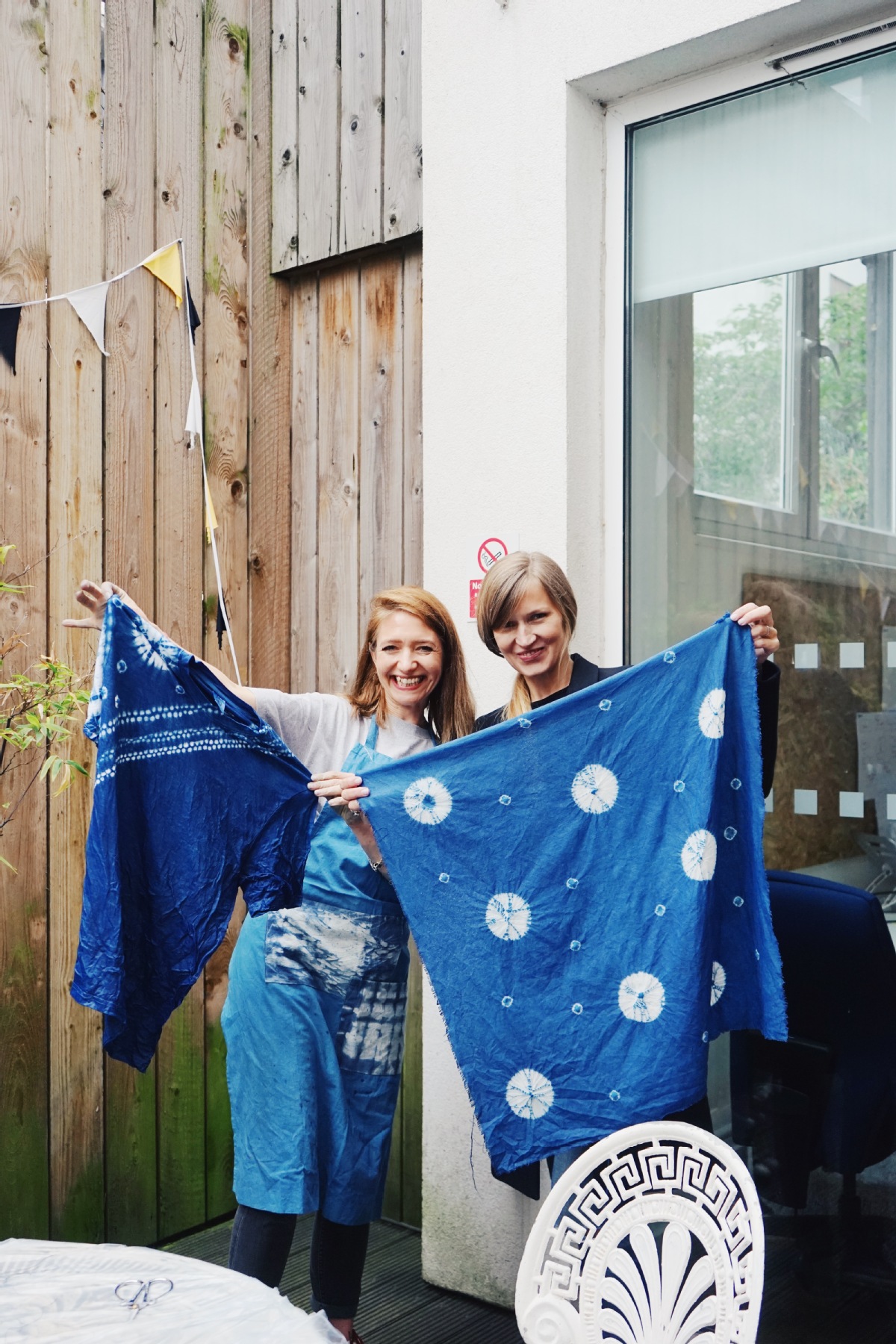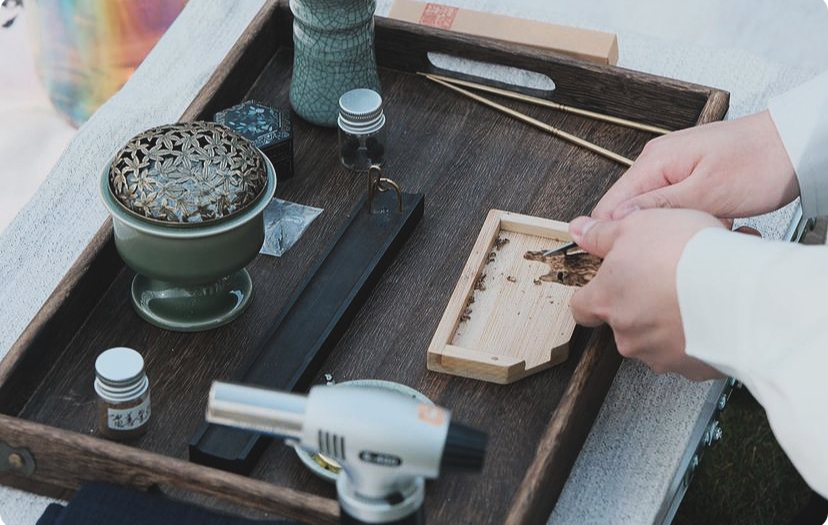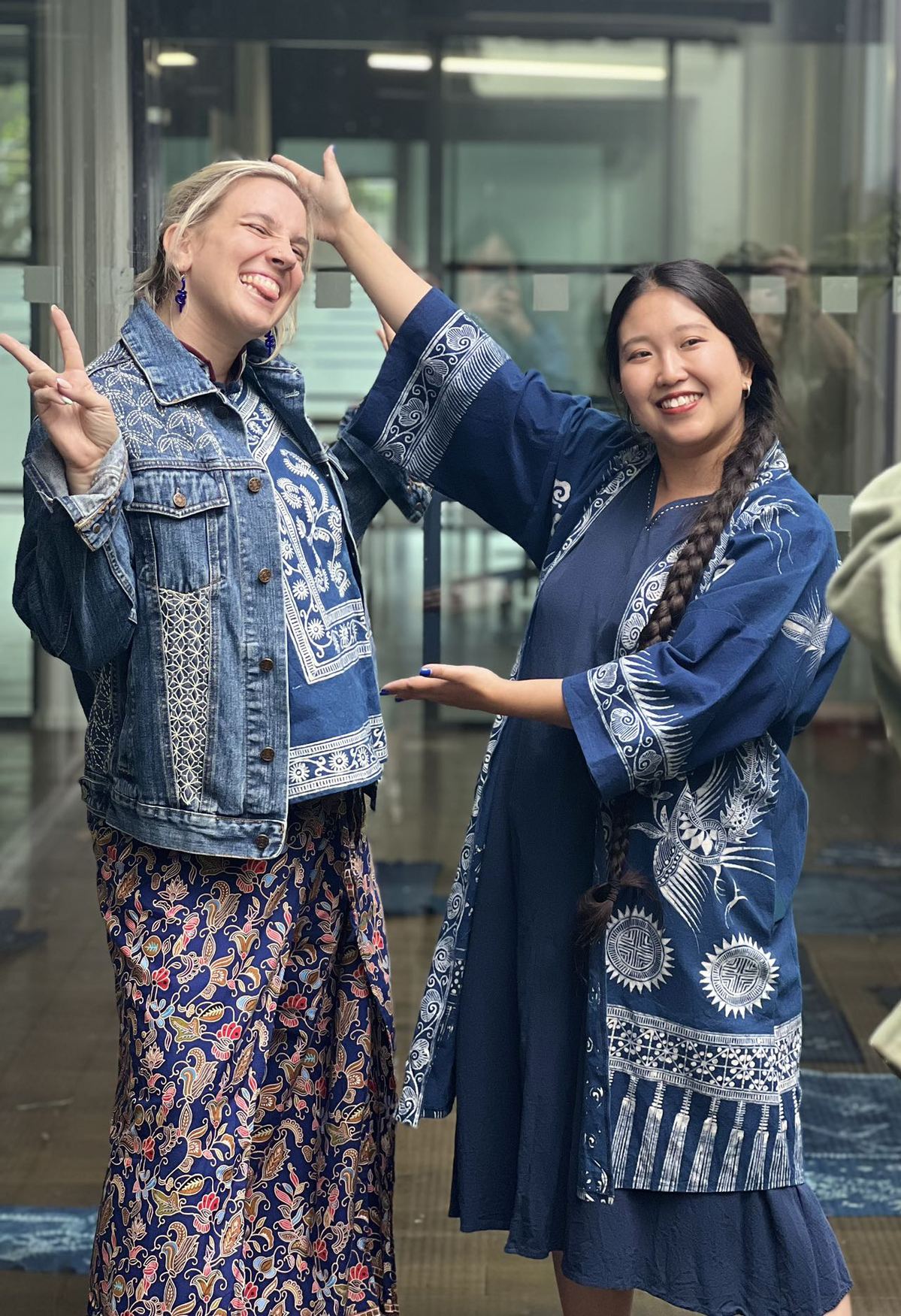Workshops Breathe Life into Traditional Crafts
 Duan Yiran poses with tourists from the UK and local artisans in Dali city, Southwest China's Yunnan province, during a trip she organized in March to showcase the Bai ethnic group's handicrafts. [Photo provided to China Daily]
Duan Yiran poses with tourists from the UK and local artisans in Dali city, Southwest China's Yunnan province, during a trip she organized in March to showcase the Bai ethnic group's handicrafts. [Photo provided to China Daily]
Sitting on a lounge chair in her studio in northwest London, Duan Yiran, the founder of Yi Crafts, a handcrafts workshop that focuses on promoting the traditional indigo dyeing technique practiced by the Chinese Bai ethnic group, admits she used to "hate" the craft.
"I grew up with it, but it wasn't something you felt cool about when you were a teenager. So, I never really liked it," she recalls.
Duan, a member of the Bai ethnic group, was born and raised in Zhoucheng village, in Dali city, Southwest China's Yunan province.
At one time, in Zhoucheng, nearly every household boasted members who had mastered the tie-dyeing technique. Duan's family also ran an indigo farm that dated back five generations, alongside a business that produced handwoven, hand-dyed fabrics.
To tie-dye pieces of cloth, the craftsperson uses needles and threads to create different folds in the fabrics before putting them in dye vats several times. Typically, the dye vats contain sky-blue-colored dye extracted from plants.
Unfolding the fabrics reveals beautiful patterns, such as geometric shapes and flowers. The areas stitched and bound by threads remain white because they were not immersed in the dye, while other areas turn blue.
In 2006, the tie-dyeing technique of the Bai ethnic group was listed as a form of national intangible cultural heritage in China.
The 29-year-old Duan, who spent her childhood helping out by cutting the threads after cloth had been dyed, never thought about inheriting the craft until she moved to London in 2015 and enrolled at the Royal Central School of Speech and Drama, to study costume design.
"I learned a lot of Western techniques at the school, like making a suit, a Victorian dress, a corset, but I lost that connection because I don't have a history associated with (those garments)," she says. "And when making the Victorian-style costumes, I found myself unconsciously applying the Chinese embroidery stitching and knotting techniques that I learned from my grandmother."
 Two participants at one of Duan's tie-dyeing workshops pose with completed work in London in March 2023. [Photo provided to China Daily]
Two participants at one of Duan's tie-dyeing workshops pose with completed work in London in March 2023. [Photo provided to China Daily]
It was at that moment Duan realized that a person may not be entirely separated from the land they were raised on and the cultural imprints that come with it.
"There are things that are always with me, I just tried to hide them. But no matter how hard I've tried to escape from the culture or try to be what's considered cool or edgy, I am still a girl from Dali," she says.
After graduating in 2019, Duan decided to set up her own handcrafts studio. In the five years since she launched her business, she has organized more than 500 online and in-person workshops, with in excess of 10,000 participants.
With more UK-based young Chinese people, dedicated to showcasing their motherland's culture, joining Yi Crafts, the studio has evolved into a space where various types of Chinese handicrafts, including embroidery, lantern making, paper-cutting, bamboo weaving, and more, have been shared.
Yi Crafts also collaborated with some of the mainstream cultural organizations in the UK, including the British Museum and the Victoria and Albert Museum, to host Chinese handicraft workshops.

Lu Yinkai cuts agarwood into shreds for incense burning during a workshop in London in June 2023. [Photo provided to China Daily]
Burning passion
Unlike Duan, Lu Yinkai has been enamored with traditional Chinese culture since a young age and now dreams of sharing with the world the details of Chinese incense culture, a centuries-old art that has almost vanished.
The 25-year-old moved to London for his master's degree in 2022 and set up his studio, named Timelessmoon, last year.
Chinese incense culture dates back more than 4,000 years, when fragrant herbs were first burned, primarily during rituals to worship ancestors, Lu says.
During the Song Dynasty (960-1279), culturally one of the most brilliant eras in Chinese history, the use of incense reached its peak as the upper classes regarded incense as an elegant pursuit, and ancient scholars, poets, and artists of that period burned it while composing poetry, playing the guqin (a traditional Chinese plucked-string zither), appreciating flowers, and hosting guests, Lu explains.
However, during the later Qing Dynasty (1644-1911) when Chinese people faced internal troubles and external aggression, the culture inevitably faced preservation challenges. Fast-forward to today, Chinese incense does not hold a prominent position internationally, Lu adds.
 Duan and a British artisan pose in London in August 2023 with clothes that were hand-dyed using traditional tie-dyeing techniques. [Photo provided to China Daily]
Duan and a British artisan pose in London in August 2023 with clothes that were hand-dyed using traditional tie-dyeing techniques. [Photo provided to China Daily]
He has been apprenticing under experts who have long studied Chinese incense, delving into ancient texts, and learning about the tools, materials, and methods involved in using incense.
His studio regularly organizes workshops where participants can learn to appreciate the timeless tradition while experiencing Chinese incense or making incense sachets.
Although their specialties differ, the two young Chinese artisans share similar views on spreading Chinese culture overseas. They both express a desire for their events to serve as a space that transcends borders, where people of all nationalities, races, genders, and ages can freely share.
"There are always commonalities between cultures because we are all human beings," says Lu.
Duan adds: "We are merely bridges, the important part is the people on both sides of the bridge."